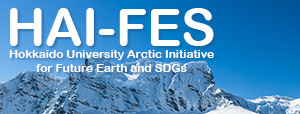

| Date & Time | Tuesday, November 15, 2022, 15:00-16:30 |
| Method | Online | Participant | 17 people |
| Lecturer1: Yoshiki Ito (Graduate School of Environmental Science) Presentation Title: Prediction of the number of forest fires and burned area in the Siberian region using machine learning Abstract: According to the IPCC AR6 report, “fire weather conditions” are predicted to increase in many regions in the future due to climate change. Forest fires have become a global environmental problem, affecting the surrounding ecosystems and causing transboundary air pollution to distant locations. In fact, high concentrations of PM2.5 emitted from forest fires in and around Siberia have been observed in Hokkaido (Sapporo). In particular, the Arctic region has also been significantly affected by transboundary air pollution from forest fires. It has also been reported that brown carbon generated by forest fires accelerates global warming in this region. Therefore, the management of forest fires in the mid-to-high latitudes of the Northern Hemisphere is important to prevent air pollution in the Arctic region. In this presentation, we describe a machine learning model that predicts the number of fires and the burned area in the northeastern and southwestern regions of the Siberian region, and compare the prediction results in the two regions. |
|
| Lecturer2: Ralf Greve (Institute of Low Temperature Science) Presentation Title: Predicting the Change of the Greenland and Antarctic Ice Sheets Until the Year 3000 Abstract: The ice sheets of Antarctica and Greenland are the largest potential contributors to future sea-level rise. Computer simulations are a valuable tool to assess these contributions. Here, we investigate the mass loss of the ice sheets with our model SICOPOLIS until the year 3000 under the assumption of ongoing climate change until 2100 and a constant climate thereafter. The results show that 21st-century climate change will affect both ice sheets for many centuries beyond that and can lead to a threatening contribution to global sea-level rise (several metres) without effective climate change mitigation measures. |
|








